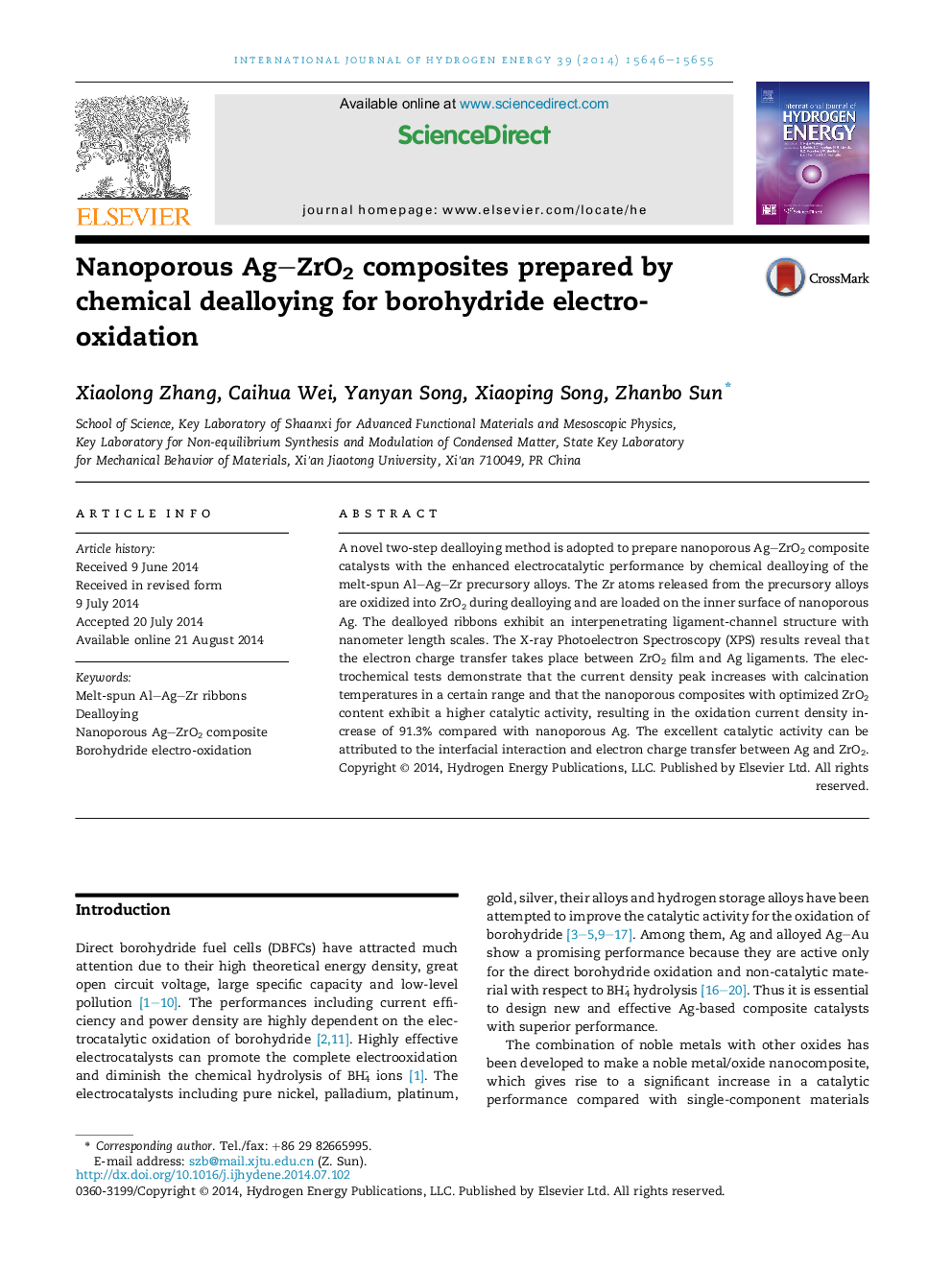| Article ID | Journal | Published Year | Pages | File Type |
|---|---|---|---|---|
| 1272402 | International Journal of Hydrogen Energy | 2014 | 10 Pages |
•Nanoporous Ag–ZrO2 composites are successfully prepared by chemical dealloying.•ZrO2 nanoparticles are loaded on the inner surface of nanoporous Ag.•Electron transfer takes place between the ZrO2 and Ag after calcination at 673 K.•Ag–ZrO2 composite exhibit an enhanced catalytic activity for the oxidation of BH4−.
A novel two-step dealloying method is adopted to prepare nanoporous Ag–ZrO2 composite catalysts with the enhanced electrocatalytic performance by chemical dealloying of the melt-spun Al–Ag–Zr precursory alloys. The Zr atoms released from the precursory alloys are oxidized into ZrO2 during dealloying and are loaded on the inner surface of nanoporous Ag. The dealloyed ribbons exhibit an interpenetrating ligament-channel structure with nanometer length scales. The X-ray Photoelectron Spectroscopy (XPS) results reveal that the electron charge transfer takes place between ZrO2 film and Ag ligaments. The electrochemical tests demonstrate that the current density peak increases with calcination temperatures in a certain range and that the nanoporous composites with optimized ZrO2 content exhibit a higher catalytic activity, resulting in the oxidation current density increase of 91.3% compared with nanoporous Ag. The excellent catalytic activity can be attributed to the interfacial interaction and electron charge transfer between Ag and ZrO2.
